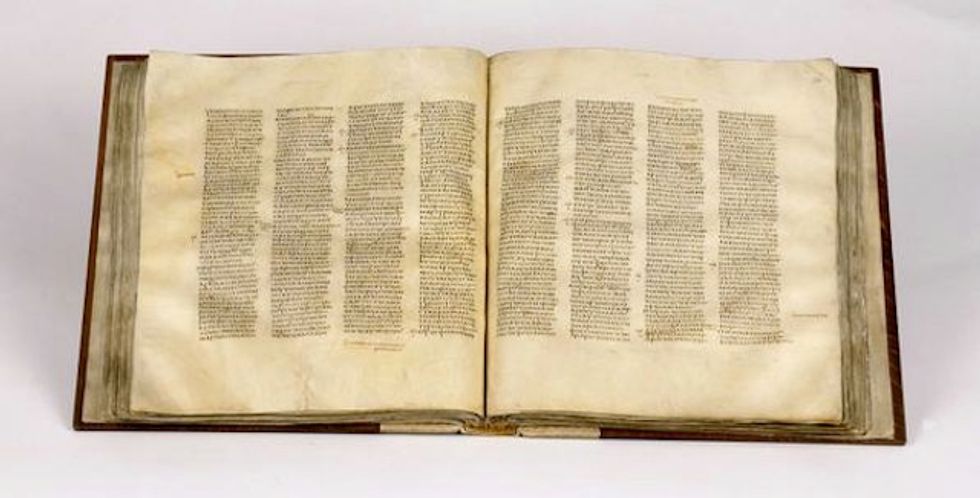
The Codex Sinaiticus. (Image source: British Library via British Museum)

The oldest surviving Bible, the Codex Sinaiticus, which includes the earliest copy of the New Testament, will be put on rare display in London starting in October, the British Museum announced this week.
It’s only the second time the British-held portion of the fourth century AD Bible - handwritten in Greek - has been loaned for exhibition. The first time was in 1990, Britain’s Guardian newspaper reported.
“Since it arrived in the 1930s it has always been one of the greatest treasures in the collection,” Scot McKendrick, head of western manuscripts at the British Library, told the Guardian.
A star loan from @britishlibrary in #EgyptExhibition will be the Codex Sinaiticus, the world’s oldest surviving Bible pic.twitter.com/lNh3sQSwXt
— British Museum (@britishmuseum) August 27, 2015In 1933, Soviet leader Joseph Stalin put the Codex up for sale to raise foreign capital. The British Treasury provided most of the £100,000, or about 153,915, needed to close the deal, and the antiquity thus moved to the U.K.
The British Library agreed to loan the Codex to the British Museum in London to offer an example of the thriving monotheistic cultures after the Egyptian pharaohs and the culture of multiple-god worship.
“It is quite phenomenal [that] they are able to lend it to us,” Elisabeth O’Connell, assistant keeper in the British Museum’s department of ancient Egypt and Sudan told the Guardian, adding, “We are absolutely thrilled.”

Besides its age, the Codex is particularly treasured because of its offering the prototype for future Christian Bibles.
Scholars have described it as “essential for an understanding of the content and the arrangement of the Bible.”
The text includes thousands of corrections which were added up until the 12th century.
“This is a very beautiful and fine book, but it also has all this activity going on its margins and between lines, all over the place really,” said McKendrick of the British Library.
The dating of the Codex to the fourth century AD placed it shortly after the reign of Roman Emperor Constantine the Great.
The Codex will be displayed at the British Museum’s exhibition “Egypt: Faith After the Pharaohs” from October 2015 to February 2016.
Besides the Codex, the exhibition will show other rare documents reflecting Christian, Islamic and Jewish faith in Egypt.
Those include the 9th century Hebrew Gaster Bible and a Koran from Oxford University’s Bodleian Library, the Times of Israel reported.
For those who cannot make it to London, the complete Codex can be seen online following a 2009 collaborative effort between institutions in the U.K., Germany, Egypt and Russia, which contributed the fragments in their possession.
As for biblical artifacts closer to home, the Museum of the Bible and the Israel Antiquities Authority earlier this month announced that the forthcoming museum in Washington, D.C. would permanently display a huge number of artifacts found in Israel dating to the Canaanite, First Temple and Second Temple periods.